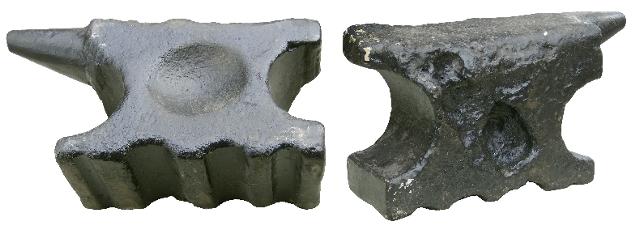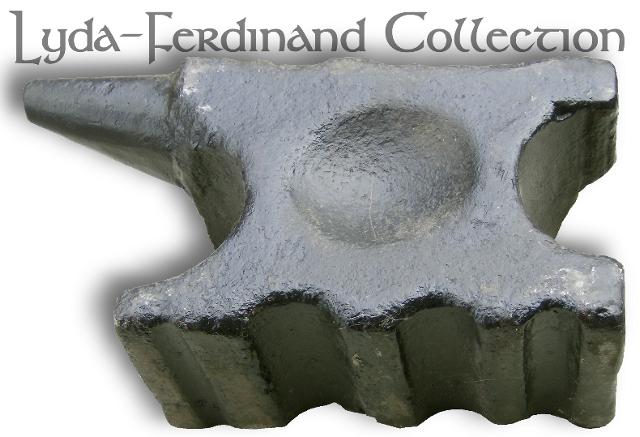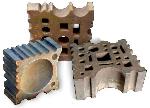Swage blocks are cast iron thus not suitable as a blacksmiths' anvil. So technically this is a swage block, not an anvil.
A horn sticking out one side makes the opposite side usless unless the user makes a special support (stump) with a hole for the horn.
This reduces its usefulness as a swage block and the horn if used like an anvil's horn will surely break off.

The back side (top of the casting) is the result of a casting failure which is common in green sand (clay and water bonded sand) molds.
The mold colapsed into the casting and the pour was cut short.
Due to the high cost of melting the iron and the relatively low price of swage blocks many were sold as seconds.
If rejected by the customer they may have been set aside and sold to employees or someone else.
Dimensions:
Weight:



 Return to The Lyda-Ferdinand Collection
Return to The Lyda-Ferdinand Collection Anvil Collections Gallery Index
Anvil Collections Gallery Index SwageBlocks.com
SwageBlocks.com
A horn sticking out one side makes the opposite side usless unless the user makes a special support (stump) with a hole for the horn. This reduces its usefulness as a swage block and the horn if used like an anvil's horn will surely break off.
The back side (top of the casting) is the result of a casting failure which is common in green sand (clay and water bonded sand) molds. The mold colapsed into the casting and the pour was cut short. Due to the high cost of melting the iron and the relatively low price of swage blocks many were sold as seconds. If rejected by the customer they may have been set aside and sold to employees or someone else.